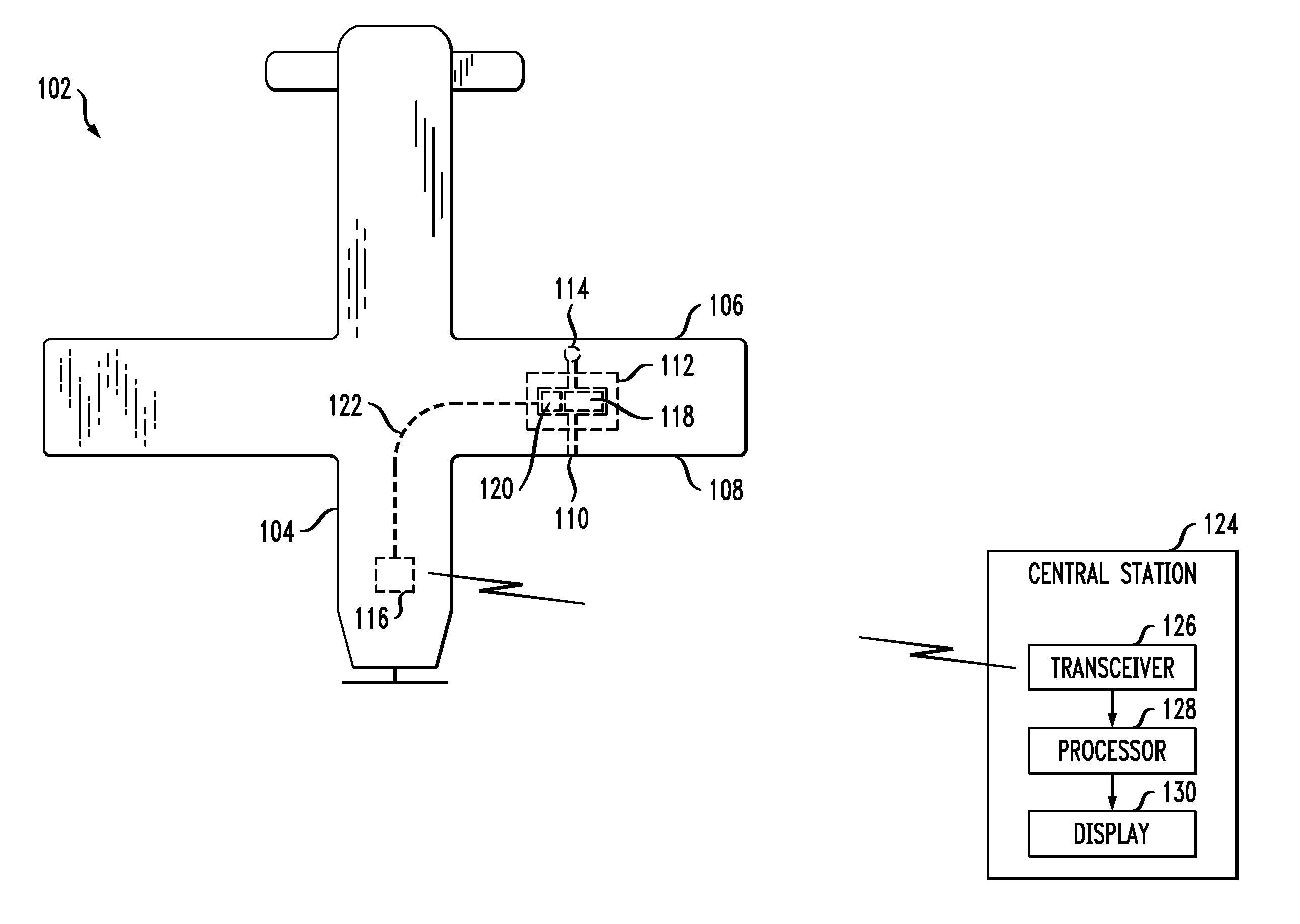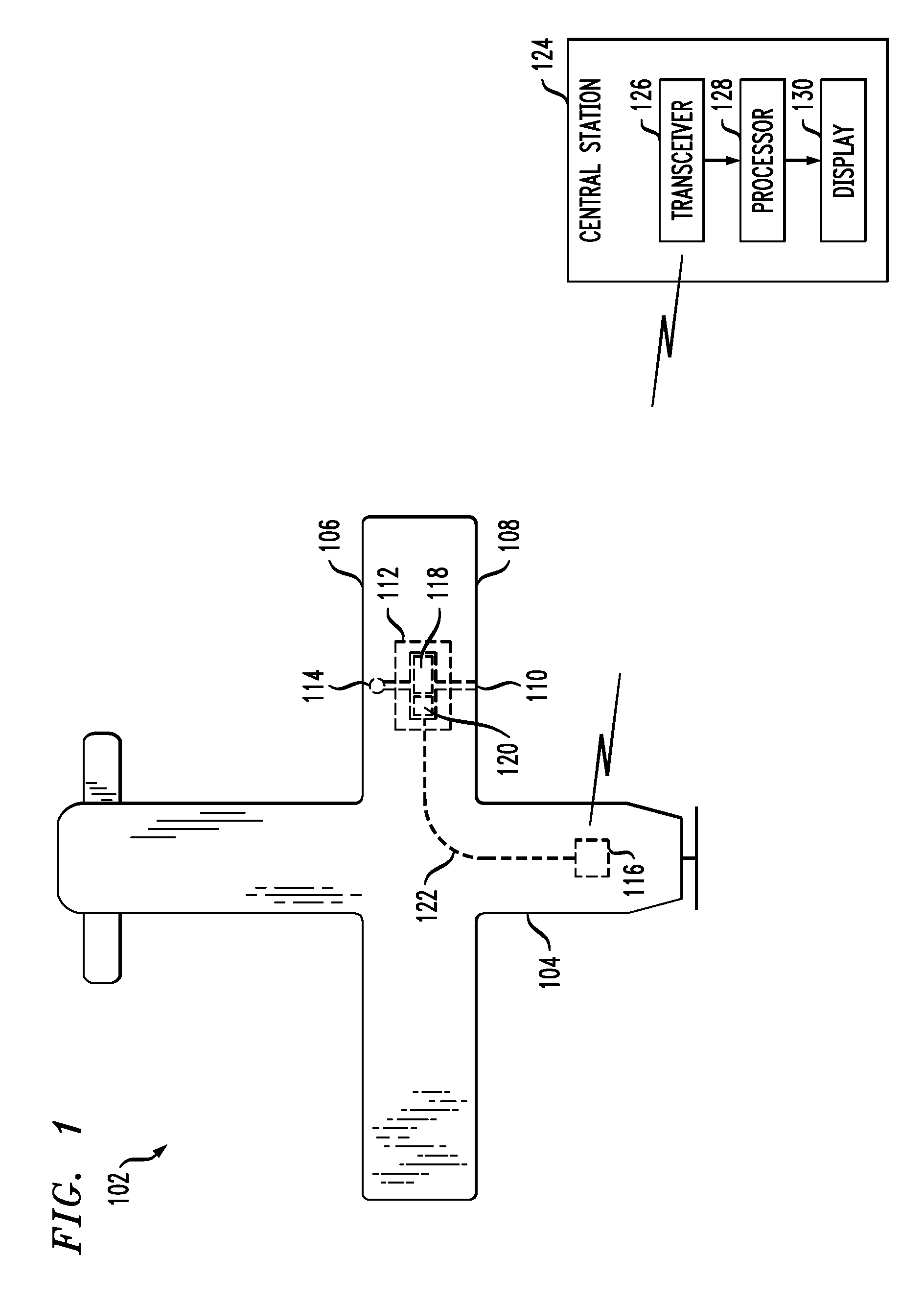UAV comprising a sensing system for detection and identification of biological particles
a technology of biological particles and sensing systems, which is applied in the direction of gas current separation, navigation instruments, instruments, etc., can solve the problems of large volume, large cost, and large cost of current bio-detection systems, and achieves low cost, easy operation, and light weight
- Summary
- Abstract
- Description
- Claims
- Application Information
AI Technical Summary
Benefits of technology
Problems solved by technology
Method used
Image
Examples
Embodiment Construction
[0028]The illustrative embodiment of the present invention is an unmanned aerial vehicle that includes a sensing system for the detection and, optionally, identification of biological agents. In some embodiments, the sensing system is very light and quite small, fitting in an enclosure that is about 1 inch×1 inch×2 inches. This enables the sensing system to be used in conjunction with mini and even micro UAVs.
[0029]Biological agents of interest typically have a size that is in a range of hundreds of nanometers (e.g., for viruses, etc.) to a few microns (e.g., for bacteria, etc). Typical biological agents of interest include, for example, anthrax (1×2 micron), plague (0.5×1 micron), tularemia (0.5×1 micron), and small pox (200×250×250 nanometers). The illustrative embodiment of the present sensing system is capable of detecting particles in this size range. In some variations of the illustrative embodiment, the sensing system is configured to detect smaller biological agents, and in ...
PUM
| Property | Measurement | Unit |
|---|---|---|
| of wavelengths | aaaaa | aaaaa |
| peak wavelength | aaaaa | aaaaa |
| size | aaaaa | aaaaa |
Abstract
Description
Claims
Application Information
 Login to View More
Login to View More - R&D
- Intellectual Property
- Life Sciences
- Materials
- Tech Scout
- Unparalleled Data Quality
- Higher Quality Content
- 60% Fewer Hallucinations
Browse by: Latest US Patents, China's latest patents, Technical Efficacy Thesaurus, Application Domain, Technology Topic, Popular Technical Reports.
© 2025 PatSnap. All rights reserved.Legal|Privacy policy|Modern Slavery Act Transparency Statement|Sitemap|About US| Contact US: help@patsnap.com



